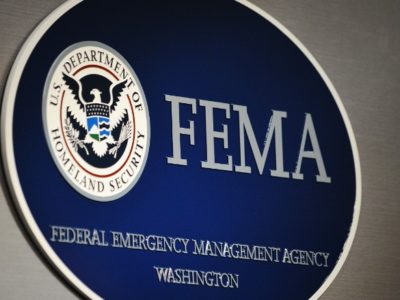The Long Life and Sudden Demise of Federal Wetlands Protection
Here’s a timeline of events.
It’s no wonder that one EPA staffer’s reaction to the Supreme Court ruling was a single word: “Heartbroken.” In 2023, the Supreme Court ended fifty years of broad federal protection to wetlands in Sackett v. United States. It is only when you look back at the history of federal wetland regulation that you realize just how radical and destructive this decision was. For instance, under the Court’s reasoning, a Reagan Administration regulation would be considered a blatant environmentalist overreach.
Here’s a timeline of the major events.
1972,
Congress passes the Clean Water Act, which requires a federal permit for filling or dredging in “navigable waters,” defined as the “waters of the United States.”
1977.
Army Corps defines navigable waters to include “isolated lakes and wetlands, intermittent streams, prairie potholes, and other waters … the destruction of which could affect interstate commerce.” A footnote explains that this category includes “”all other waters of the United States that could be regulated under the federal government’s Constitutional powers to regulate and protect interstate commerce.”
1985.
In US v. Riverside Bayview Homes, the Court upheld federal jurisdiction over wetlands that are adjacent to water bodies.
1986.
Reagan Administration codifies previous policies to cover all waters “such as intrastate lakes, rivers, streams (including intermittent streams), mudflats, sandflats, wetlands, sloughs, prairie potholes, wet meadows, playa lakes, or natural ponds, the use, degradation or destruction of which could affect interstate or foreign commerce,” plus adjacent wetlands.
1988.
President George H.W. Bush promises ‘no net loss of wetlands.”
2001.
In SWANCC v. U.S., the Supreme Court strikes down a rule that covered any wetland or pond used by migratory birds.
2006.
In Rapanos v. US, Justice Scalia writes for four Justices to advocate a very restrictive test of federal jurisdiction. Five Justices (four dissenters plus Justiice Kennedy) support the “significant nexus” test, which the lower courts generally view as binding law.
2015.
Obama Administration issues Waters of the United States (WOTUS rule), which ignites a major political dispute and becomes mired in litigation.
2020.
Trump Administration adopts a rule largely following Scalia’s view of the statute, but with some concessions to the Kennedy test.
2022.
Biden Administration adopts new version of WOTUS rule, which requires that a wetland be close enough to a water body that it can significantly influence water quantity or quality, generally meaning that they are within a few hundred feet.
2023.
In Sackett v. EPA, the Court adopts the restrictive Scalia test, which had been rejected by a majority of Justices in the 2006 Rapanos case. The ruling guts federal protection for wetlands and many small streams, especially in the West. It limits federal authority to a fraction of U.S. wetlands.
Reader Comments
7 Replies to “The Long Life and Sudden Demise of Federal Wetlands Protection”
Comments are closed.







Speaking of Time Lines, what took us so long to reach this point:
How three UC campuses are phasing out fossil fuels
February 1, 2024
After all, UC was warned about this in the 1980s.
No wonder we are, if not already, RUNNING OUT OF TIME!!! (as you folks have warned us many, many times).
P.S. FYI:
James Hansen first warned Congress of the threat from climate change in 1988. Today, in a controversial new peer-reviewed paper published in Oxford Open Climate Change, he brings a new warning: Scientists are underestimating how fast the planet is warming. Nov 2, 2023
P.S.+
Dan, considering my comments above, will Berkeley Powers That Be ever achieve a sense of urgency to act upon your comment:
“Where Berkeley falls short, in my view, is that there’s little leadership from the top and little structure at the campus level to organize climate efforts.”
Interesting, once again the Berkeley Powers That Be get away with giving The Power of Money a higher priority than the Survival of the Human Race.
the correct response is to have Congress change the law if the current SCOTUS ruling does not comport with Congressional intent.
The improper response under the Constitution is to have the executive branch assume power to plug holes in a statute. while the particular concern is noble, extensions of executive power could be used by a future president to do bad things.
and regulation of wetlands can fall within traditional police power of states/local governments which raises complicated federal/state issues.
Having Congress changed the law maybe the correct response, but it’s entirely hopeless unless both the house and the senate are Democratic. The effective response is to get out the vote.
Heartbroken is right. A nuclear bomb on the nation’s remaining wetlands. Sackett cannot be squared with Riverside Bayview. Rehnquist, Burger, Powell & Co. were such tree huggers! We are being dragged back to the 1950s by a radical SCOTUS, one crafted by political chicanery and the cruel hand of fate.